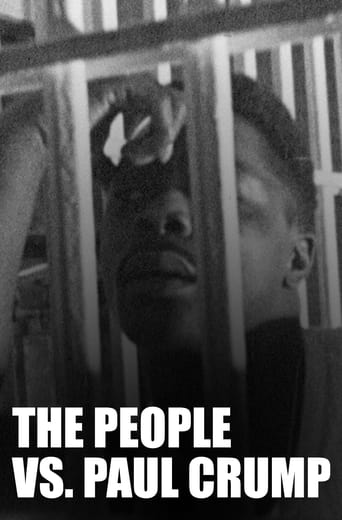MisterWhiplash
Before the Thin Blue Line or THe Central Park Ficw, William Friedkin, who at the time was mostly an assistant director in television, by chance contributed to saving a man from certain death through The People vs Paul Crump. The short of it is that in 1953, Paul Crump was arrested and charged with a murder he didn't commit that involved a robbery of a payload from thousands of dollars and some bad dudes in masks. Crump wasn't there when it happened, though he knew some of the robbers and downright didn't like the mastermind of the crime (in an interesting moment of candor, Crump does say he had wanted to rob the robbers, to get the money for himself, the worst he really got).Why was Crump fingered? It's easy enough to figure out, but what was staggering (if, sadly, not surprising) were the lengths to how the police went to get a confession - through torture, basically, by stringing Crump up and asking him over and over for those words "I did it." What the documentary here shows is how Crump, after nine years of prison, has never been in doubt that he didn't do this murder, but has had a lot of time to contemplate his life, if 'what goes around comes around' and such things, and, by order of the warden, to help others... while still on death row.Friedkin is effective in his direction, as is dp Bill Butler, through gritty dramatization on a minuscule budget, and though it doesn't directly invoke the Civil Rights struggle you can feel it in the soul of it. Nothing feels at all fake here, and even as it's the prototype for many TV dramatization-crime shows to come (less the Morris film comparison, which was more abstract, this is straightforward), not a moment feels false or put together in bad taste. When the recreation of the crime happens, it feels raw and violent and terrifying - this isn't thrilling action, it's hard to watch (almost). Same for the scenes where Crump (the actor portrays him of course) is set up by the police and we hear Crump's own tearful take on this, what the cops said to him - no, not tearful, sobbing, convulsive self - as they pressed more and more to get that confession. Class struggle is there on the screen, and it's a harsh cry against injustice without saying outright 'black people are mistreated'. It doesn't have to say it, it shows it.It may be at times crudely shot and edited (and I should take off another point for that weird water drip sound effect), but the skill and unflinching nature of the filmmaking is totally impactful, and Crump makes for a compelling subject. It's also finally available on DVD, and in a beautiful transfer.
CitizenCaine
A very young William Friedkin produced and directed this documentary for television in 1962 when Paul Crump had been in prison for nine years, waiting on death row. Crump was convicted for the shooting death of a Chicago meat-packing plant's security guard during an armed robbery, which netted some $20,000. Chicago police quickly moved in, arrested Crump, and convicted him, primarily based on the testimony of one of those convicted for the crime. Crump claims he's innocent, was with a woman the day of the crime, and the woman later testifies in his defense, only to disappear later due to a public outcry and ridicule.Director William Friedkin reenacts the crime based on Crump's story, but viewers never get a real sense of what may have happened or why they should believe Crump any more than the police. It really is just a he said, she said stand off, and that's really enough to have doubt when it comes to a death sentence. Friedkin does a good job of showing Crump's side of the story and how he later supposedly rehabilitated himself while in prison. Friedkin is less successful at demonstrating a need to end or curtail capital punishment; he would have been better served by focusing on modifying death sentences based on the weakness of evidence.Even though Friedkin's film was never aired on television (probably due to the victim being white and Crump being black), it probably played some role in keeping Crump out of the electric chair in Illinois some 15 times throughout his incarceration. Crump went on to spend an additional thirty some years in prison before being released in 1993, after having his death sentence later reduced to 119 years. Ironically, Crump was sent back to prison because of violating a protection order and harassing a family member, and he died of lung cancer in 2002...in prison. While in prison, Crump became literate, reading classic literature, and writing a book of his own entitled "Burn, Killer, Burn!", which was released at the time this film was made. **1/2 of 4 stars.
